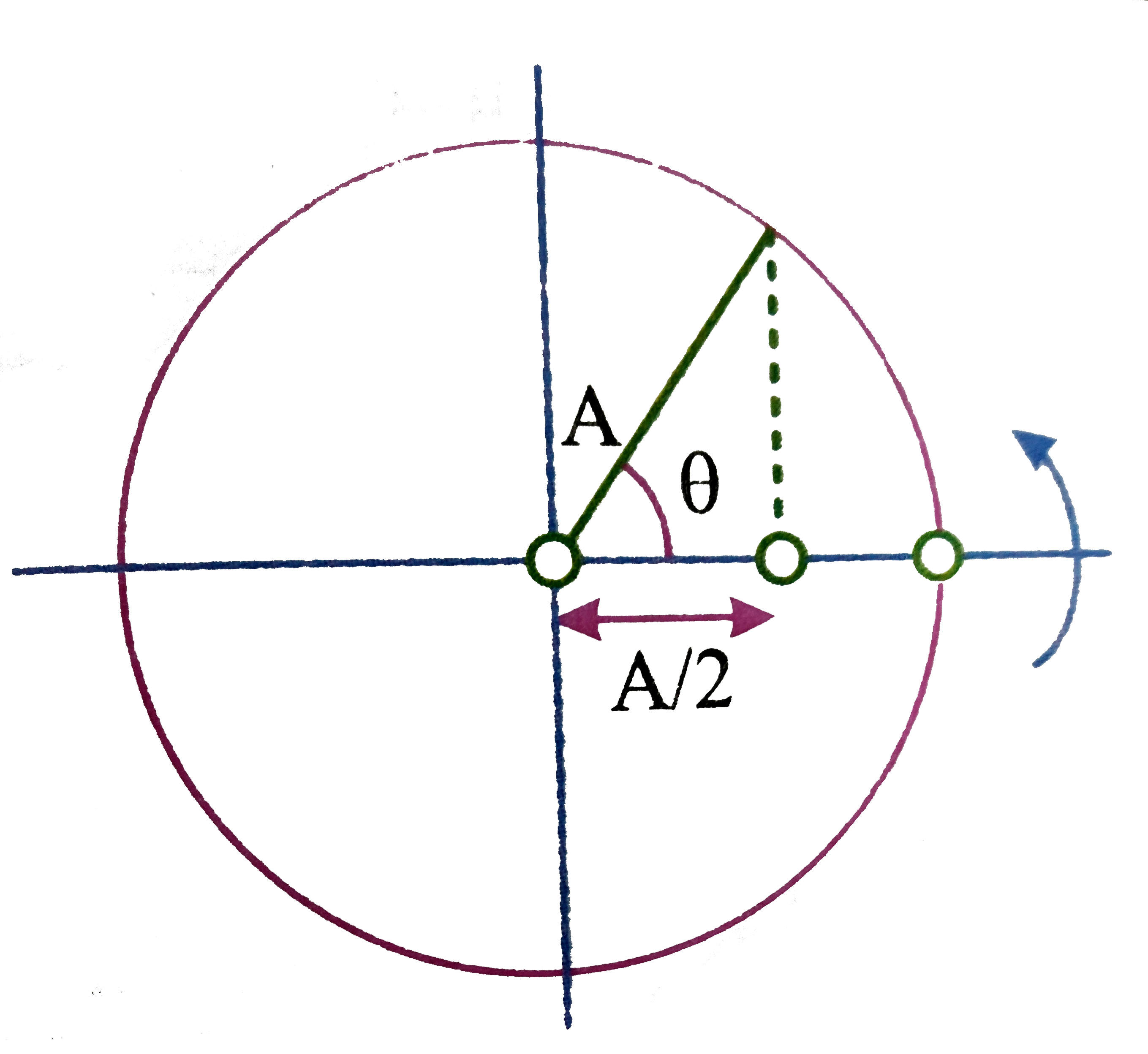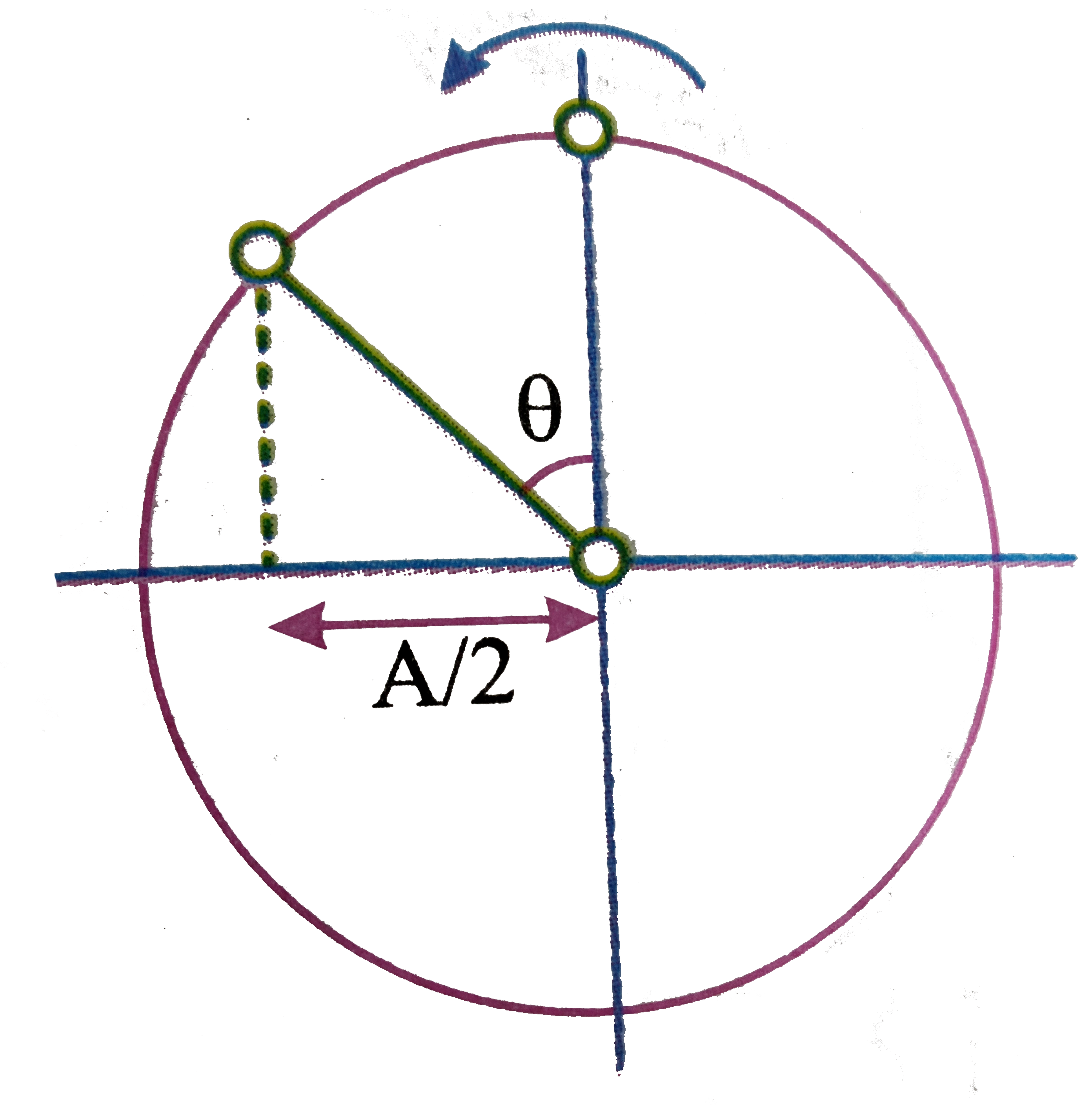A particle performing simple harmonic motion undergoes unitial displacement of A2 (where A is the amplitude of simple harmonic motion) in 1 s. At t=0, the particle may be at he extreme position or mean position the time period of the simple harmonic motion can be
A
6s
B
2.4s
C
12s
D
1.2s
Video Solution
Text Solution
The correct Answer is:A, C
At t=0 when particle is at exterme position then situation is shown in figure

θ=ωt
From figure cosθ=A/2A=12⇒θ=π3
At t=0 when particle is at mean postion then situation is shown in figure.

θ=ωt
From figure sinθ=A/2A⇒θ=π6
⇒π6=2πT×1⇒T=12s
|
Topper's Solved these Questions
- OSCILLATIONSBook:NARAYNAChapter:OSCILLATIONSExercise:ASSERTION & REASON QUESTIONS
Explore 13 Videos
- OSCILLATIONSBook:NARAYNAChapter:OSCILLATIONSExercise:LEVEL-V
Explore 1 Video
- OSCILLATIONSBook:NARAYNAChapter:OSCILLATIONSExercise:NCERT BASED QUESTIONS
Explore 1 Video
- NEWTONS LAWS OF MOTIONBook:NARAYNAChapter:NEWTONS LAWS OF MOTIONExercise:PASSAGE TYPE QUESTION
Explore 6 Videos
- PHYSICAL WORLDBook:NARAYNAChapter:PHYSICAL WORLDExercise:C.U.Q
Explore 10 Videos
Similar Questions
Knowledge Check
A body is performing simple harmonic motion. Then its
Aaverage total energy per cycle is equal to its maximum kinetic energy.Baverage kinetic energy per cycle is equal to half of its maximum kinetic energy.Caverage total energy per cycle is equal to half of its malximum kinetic energy.DNone of these.In simple harmonic motion,the particle is
Aalways accelerationBalways retardedCalternately acceleration and retardedDneither acceleration nor retardedThe equation of motion of a simple harmonic motion is
Ad2xdt2=−ω2x,Bd2xdt2=−ω2tCd2xdt2=−ωxDd2xdt2=−ωt
A particle executing of a simple harmonic motion covers a distance equal to half its amplitude in on e second . Then the time period of the simple harmonic motion is
View SolutionThe phase (at a time t) of a particle in simple harmonic motion tells
View SolutionWhile a particle executes linear simple harmonic motion
View SolutionThe velocity of a particle executing simple harmonic motion is
View SolutionFor a particle undergoing simple harmonic motion, the velocity is plotted against displacement. The curve will be
View Solution